Topics
How to Grow Thyme: 4 Reasons Your Garden Needs This Essential Herb
Herb growing tipsThyme is well known as a culinary herb used in a variety of dishes. But it doesn’t have to remain in the kitchen. There’s much more to know about thyme. This perennial herb is easy to grow and incorporate into water-wise landscaping. It’s also a beneficial companion plant in vegetable gardens. Learn how to add this “secret ingredient” to your garden.

What is Thyme?
Thyme (Thymus vulgaris) is a perennial Mediterranean herb that grows from the western Mediterranean to southeastern Italy. Thymus vulgaris is the most common culinary variety of thyme.
Thyme is one of those herbs that once you know how to use it, you find that it’s essential. Thyme is used in a variety of dishes, from soups, sauces, vinaigrettes, and marinades. It works well with everything. Just add a pinch here and there to add another layer of flavor.
You can even add thyme flowers for visual appeal.
Why grow Thyme?
1 - The great thing about growing thyme is when you add fresh herbs, you realize that you can make amazingly flavorful dishes at home. Saving money, eating healthier, who knew this simple herb could do so much?
2 - Thyme is worth growing for its culinary uses alone. However, it is also beneficial for your landscape and garden. When thyme flowers, pollinators like bees and butterflies are drawn to it. And when pollinators are encouraged into your garden, they can increase the yields of all your fruits and vegetables.
3 - It is also a beneficial companion plant for cabbage and tomatoes. A study by Iowa State University showed a significant decrease in cabbageworm and other insect damage to plants in plots with thyme.
4 - The visual appeal of thyme is also beautiful in landscaping designs. It’s an excellent plant for xeriscaping gardens and grows well in containers, rock gardens, pavers, and even cracks in landscaping walls.
How to Grow Thyme

When to Plant Thyme
Any time can be the right time.
If you want to grow thyme in an outdoor garden, it is best to start seeds indoors 8 to 10 weeks before the last frost.
For an indoor herb garden, you can plant thyme any time of year. Because of its size and low water requirements, thyme is easy to grow indoors. However, it will need 6 hours of sunlight a day. This can be supplemented with grow lights.
How to grow thyme from seed
- Lightly press thyme seeds into a moist growing medium and barely cover them with soil.
- The optimal soil temperature for seed germination is 65º to 70º F.
- Keep the seeds moist until germination, which will take 14 to 21 days.
- Move seedlings to individual containers after four true leaves appear.
Tips for growing thyme
- To ensure your thyme seedlings are ready for outdoor life, give them time to become sturdy. Once the seedlings are 3 to 4 inches tall, you can cut off the tips to encourage the growth of side branches.
- Once the plants are ready, and all danger of frost is passed, you can start hardening off thyme seedlings to get ready for transplanting outdoors.
- Choose a sunny location where the plants will have direct sunlight for 6 hours a day.
- Place the plants about 8” apart. Thyme doesn’t grow very tall. At its highest, it will get about 1 foot tall.
- Thyme grows best in slightly sandy soil that drains quickly. Like other Mediterranean herbs, thyme thrives on benign neglect. Giving it rich organic soil will result in good growth, but it will have less fragrance.
- Thyme has low water needs but will need regular watering for the first year until the roots become established. In the second year, thyme needs less water and will become drought-tolerant.
- Thyme will grow well with rosemary, sage, and other herbs with similar growing needs.
- Pruning thyme will encourage more vigorous growth. A good time to prune is in the spring before it starts growing and after it flowers in summer.
- After a few years, thyme plants can become woody and straggly. To revive them, divide the plants by dividing the roots. Or, start new seeds every year or two.
- Add mulch around the plants to protect thyme from freezing in the winter. Use straw or other lightweight mulch to avoid smothering the plants.
- Culinary thyme is cold hardy to zone 4 and can survive winter weather. Creeping thyme is hardy to zone 5.

Growing thyme in containers
Thyme is an excellent container herb. To grow thyme in a pot, ensure the container is at least 6 inches deep and has suitable drainage holes. Fill with sandy soil and let it dry out between waterings.

Tips for harvesting thyme
Thyme is ready to harvest when the plant is 6 to 8 inches tall. For the most intense flavor, harvest before it starts flowering. And harvest in the morning on a dry day when the oils are at their peak.
Usually, just the leaves are used in cooking. To harvest the leaves, hold the growing end of the branch and rub your fingers down the stem to strip the leaves off.
Once thyme plants are 3 to 4 inches tall, you can clip the tips of the plant to encourage branching. Harvesting often will also encourage new growth.
Never take off more than 1/3 of the plant at a time.
Drying and Storing Thyme
Drying thyme is an easy way to preserve the herb.
Clip branches right before or when it starts to flower for the most intense flavor. Hang the branches in a warm, dry location away from sunlight. When the leaves are dry, scrape the leaves from the branches.
Store dry thyme in airtight containers away from heat and light.
Notes on Creeping thyme
While we’ve focused on culinary thyme, Creeping Thyme (Thymus praecox) is also popular for gardens. Creeping thyme can be grown as a ground cover and can withstand light foot traffic. It is beautiful when intermixed with stepping stones, and the lavender flowers and small leaves give off a pleasing aroma when walked on.
You will want to grow thyme in your garden for all its uses inside the kitchen as well as all its many benefits in the garden.




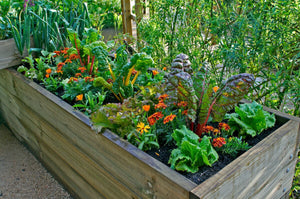
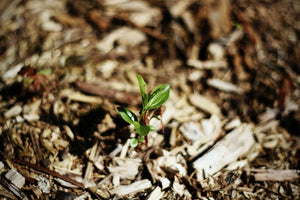
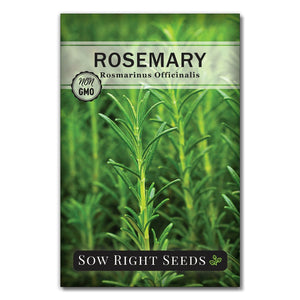
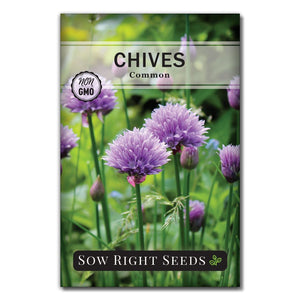
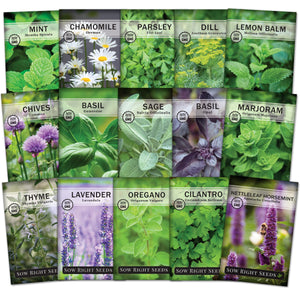
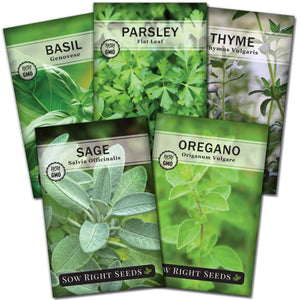
Good catch, Jeff. Fertilizer should be applied sparingly to thyme and other Mediterranean herbs. When thyme grows too quickly, the essential oils will be less potent, resulting in a weaker flavor. So test your soil first and see if fertilizer is necessary.
A lot of great information but the only thing left out was fertilizer to be used. Thanks for the help
Leave a comment